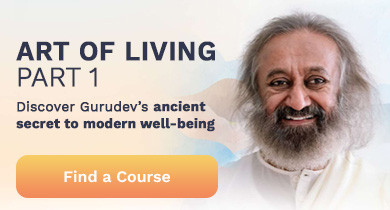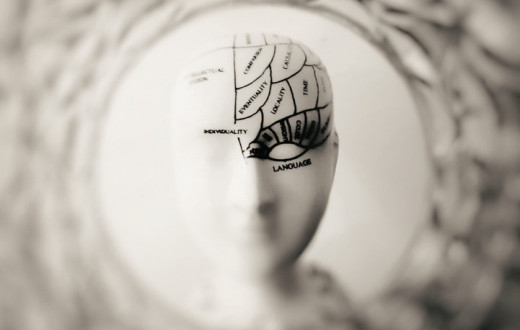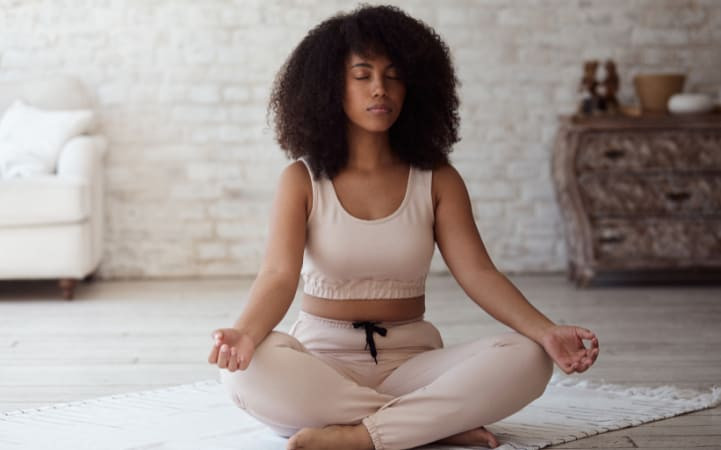
Breathing techniques might seem like the newest thing in yoga. However, they have been around for thousands of years. One such breathing technique is Kapalbhati Pranayama. This technique is part of the Hatha Yoga tradition. It's considered one of the more powerful breathing techniques and offers a host of benefits. Let’s get started on everything you need to know about Kapalbhati Pranayama.
Topics covered:
- What does Kapalbhati Pranayama mean?
- Why practice Kapalabhati Pranayama?
- How to do Kalapabhati Pranayama
- Tips for practicing Kapalbhati Pranayama
- Benefits of Kapalbhati Pranayama
- Who should not do Kapalbhati Pranayama?
- Learn the ultimate breathing technique with the Art of Living
- Related articles
What does Kapalbhati Pranayama mean?
The basic meaning breaks down like this:
Kapal = forehead; bhati = shining; pranayama = breathing technique.
Kapalbhati means ‘the shining forehead.’ Somewhere along the line, it also became known as “skull-shining breath.” This is precisely what happens with the regular practice of this pranayama. The forehead (third eye chakra area) is said to glow inside and radiate out. This area is also connected to awareness and the intellect. Practicing Kapalbhati sharpens and refines the intellect.
Pranayama is actually two words. Prana means subtle life energy. And ayama means to control.
Why practice Kapalbhati Pranayama?
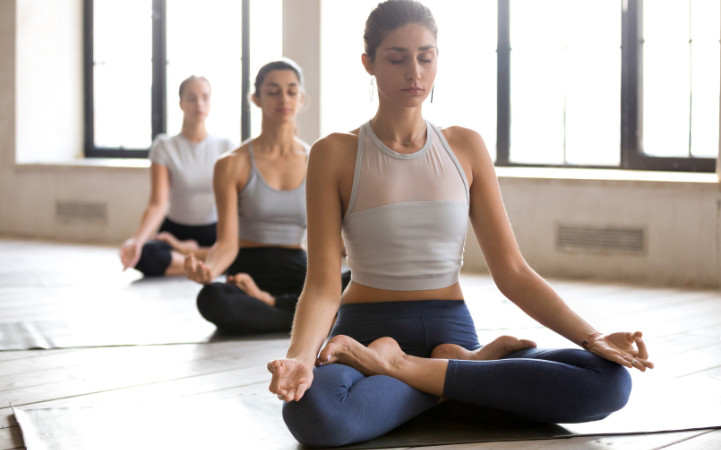
Kapalbhati Pranayama is a potent breathing exercise. It helps with weight loss and balances your entire system.
Sri Sri Yoga teacher Sejal Shah states, “When you do pranayama, up to 80% of the toxins in your body are released through the outgoing breath. Regular practice of Kapalbhati Pranayama detoxifies all the systems in your body.”
The vigorous abdominal squeezes and forceful exhalation facilitate a deeper internal cleansing. This is especially true for the abdominal organs.
How to do Kapalbhati Pranayama
Sit comfortably with your spine erect. Place your hands on the knees with palms open to the sky.
Take a deep breath through your nose.
As you exhale through your nose, quickly pull in your stomach.
Continue breathing in and breathing out. Using your abdominal muscles, pull your navel in towards the spine with each exhalation.
You may keep your right hand on the stomach to feel the abdominal muscles contract.
Complete one round of 20 breaths in and out.
Relax the navel and abdomen; the breath flows into your lungs automatically.
Return to normal breathing and place your hands on the knees, palms open to the sky.
Relax with your eyes closed and observe the sensations in your body for about 30 seconds.
You may do a total of three rounds of Kapalbhati Pranayama to complete the practice.
Tips for practicing Kapalbhati Pranayama
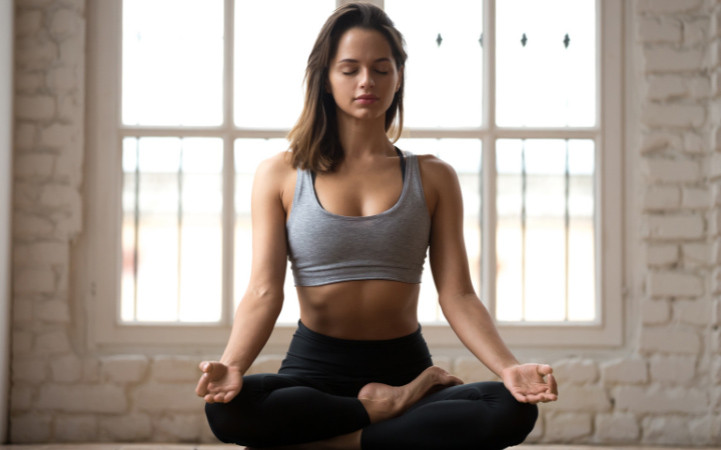
Always practice this technique on an empty stomach.
Keep your awareness on breathing out. This exercise uses active exhalation.
Don't worry about the inhalation. The moment you relax your abdominal muscles, inhalation will happen naturally.
Change your sitting position if needed to keep your spine straight.
Benefits of Kapalbhati Pranayama
Kapalbhati Pranayama initially energizes, then it calms and uplifts the mind. Here are some other benefits you can expect when you practice Kapalbhati.
- Increases the metabolic rate
- Aids in weight loss
- Stimulates abdominal organs
- Strengthens abdominal muscles
- Improves blood circulation
- Adds radiance to the face
- Improves digestive tract functioning and absorption of nutrients
- Trims down waist
- Energizes the nervous system
- Rejuvenates brain cells
- Clears the nadis (subtle energy channels)
Who should not do Kapalbhati Pranayama?
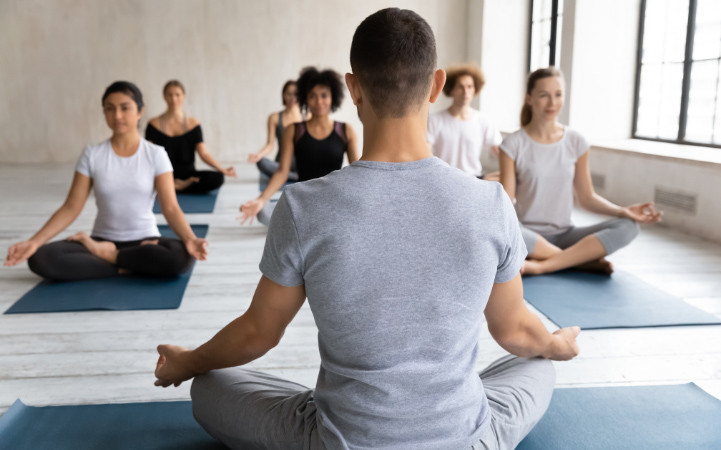
Avoid practicing this breathing technique if you have an artificial pacemaker or stent. Also, avoid it if you have epilepsy. Avoid it if you have a hernia. Avoid it if you have a backache due to a slipped disc. Also, avoid it if you have recently undergone abdominal surgery.
Women should not practice the Skull Shining Breathing technique during and shortly after pregnancy. They should also avoid it during menstruation, as it involves vigorous abdominal squeezes.
People with high blood pressure, low blood pressure, and heart problems should practice this breathing technique only under the guidance of a trained yoga teacher and your doctor.
Learn the ultimate breathing technique with the Art of Living
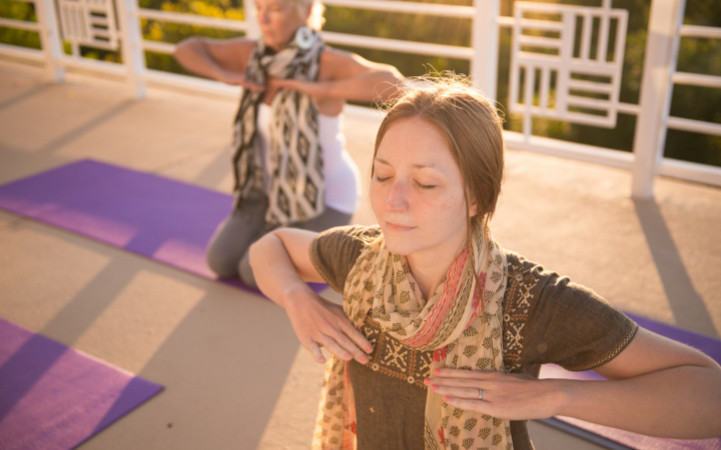
Take your breathing practices to a new level. Add SKY Breath Meditation (Sudarshan Kriya Yoga). SKY has helped millions around the world enjoy these benefits:
- Reduced stress, anxiety, and depression
- Improved well-being and life satisfaction
- Enhanced deep sleep
- Improved immunity and respiratory system
- Healthier blood pressure
- Reduced addictive behaviors
- Improved interpersonal relationships
To experience SKY for yourself, register for the Art of Living Part 1 course today!
Related articles
Breath: The New Science of a Lost Art
Deep Breathing Exercises: Why They Work and How to Start
Breathing Patterns and Your Wellbeing: Find Out the Secret
Meditation Breathing Techniques: The Link Between Breath and Mind
7 Breathing Techniques For Better Physical and Mental Health
Breathing Exercises for Sleep: Say Goodnight to Insomnia!
Why Diaphragmatic Breathing Is Your New Best Friend
Lung Exercises: Train Your Breathing Muscles and Respiration
Calm Your Anxious Mind in 5 Minutes: Try This Easy Straw Breathing Now
7 Best Breathing Exercises to Help You Reduce Anxiety and Panic Now

